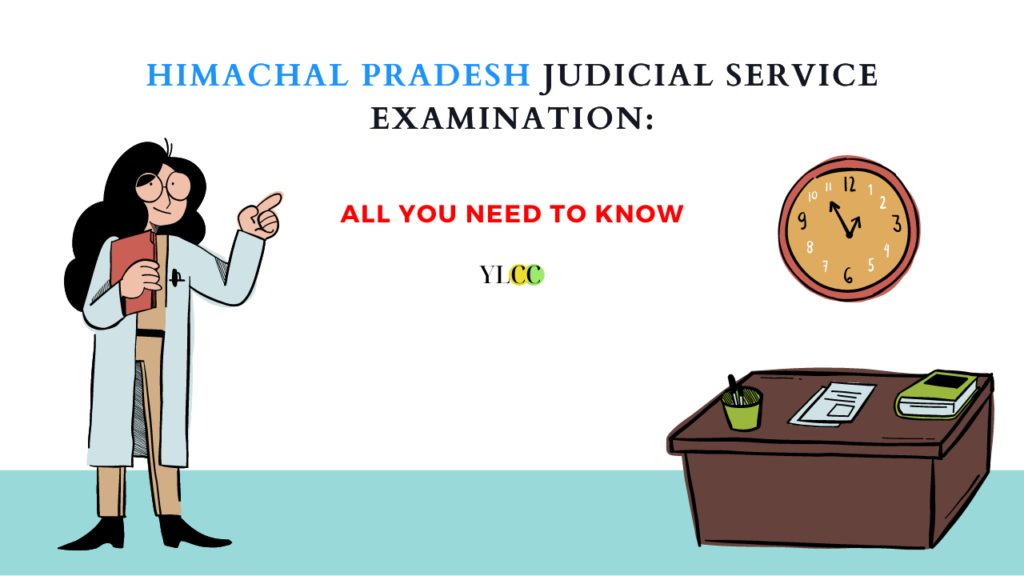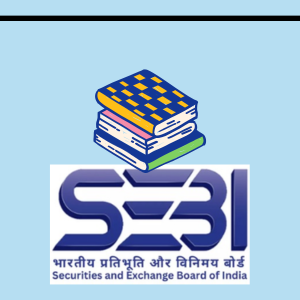
The Himachal Pradesh Judicial Service Competitive Examination is conducted by Himachal Pradesh Public Service Commission for filling up the vacancies of Civil Judge (Junior Division) on the pay scale of Rs.27,700 – 44,770.
In this article, Team YLCC brings you all the information on this exam. Read on!
ELIGIBILITY
- Aspiring candidates must be a holder of a degree in Law recognized by the Bar Council of India on 5th January 2021
- The aspiring candidate must have attained the age of 22 years but must not be more than 30 years of age as on the last date prescribed for receipt of applications in the Commission’s Office.
- The upper age limit is relaxed able by 03 years for S.C / S.T and other prescribed reserved categories (OPRC) candidates of Himachal Pradesh.
- The knowledge of customs, manners, and dialects of Himachal Pradesh and suitability for appointment in the peculiar conditions prevailing in the State of Himachal Pradesh.
- A candidate must be a citizen of India.
EXAM PATTERN
1. PRELIMINARY EXAMINATION
The preliminary examination shall be an objective type examination consisting of the following three papers:-
| Paper | Subject | Marks | Time |
| Paper-I | Civil Law-I | 100 | 1 Hour |
| Paper-II | Civil Law-II | 100 | 1 Hour |
| Paper-III | Criminal Law | 100 | 1 Hour |
Note: All three papers shall be held on the same day.
2. MAIN (NARRATIVE) EXAMINATION
Main Examination will be consisting of 05 papers as given below:
| Paper | Subject | Marks |
| Paper-I | Civil Law – I | 200 |
| Paper-II | Civil Law-II | 200 |
| Paper-III | Criminal Law | 200 |
| Paper-IV | English Composition | 200 |
| Paper-V | Language (Hindi) | 100 |
| Total |
900 |
Minimum Qualifying Marks:
(i) No candidate shall be credited with any marks in any paper unless he obtains at least 45 percent marks in that paper, except Hindi language paper (paper-V) in which candidate should obtain at least 33 percent marks.
(ii) No candidate shall be considered to have qualified the written test unless he obtains 50 percent marks in aggregate in all papers and at least 33 percent marks in language paper i.e. Hindi in Devanagri script.
Minimum Qualifying Marks
- No candidate shall be credited with any marks in any paper unless he obtains at least 45 percent marks in that paper, except Hindi language paper (Paper-V) in which candidates should obtain at least 33 percent marks.
- No candidate shall be considered to have qualified for the written test unless he obtains 50 percent marks in aggregate in all papers and at least 33 percent marks in language paper i.e. Hindi in Devanagari script.
3. VIVA – VOCE
- Candidates who qualify for the Main written examination will be called for a viva-voce test. The maximum marks for the viva-voce shall be 100.
- The marks obtained in the viva-voce will be added to the marks obtained in the Main written examination for the purpose of selection of the candidates.
EXAM SYYLABUS
PAPER-I
Civil Law-I Code of Civil Procedure. Indian Evidence Act, Indian Stamp Act, Himachal Pradesh Courts Act, 1976, and Specific Relief Act.
PAPER-II
Civil Law-II Indian Contract Act, Hindu Law, Indian Limitation Act, Transfer of Property Act, and H.P. Urban Rent Control Act.
PAPER-III
Criminal Law Indian Penal Code, Criminal Procedure Code, Chapter-XVII (section 138 to 143) of the Negotiable Instruments Act, Punjab Excise Act as Applicable to the State of H.P., Wild Life Protection Act, and Indian Forest Act.
PAPER-IV
English Composition A Choice of three Essays on General Subjects – 150 Marks Translation of Hindi Passage into English – 50 Marks
Note: The standard for the English paper shall be that of graduation examination of Himachal Pradesh University.)
PAPER V
Language Hindi (in Devanagari Script) No books prescribed. The paper of Hindi will comprise of the following:-
Translation of English passage into Hindi. – 30 Marks
Essay in Hindi on any topic out of three. – 50 Marks
Composition (Idioms and Corrections etc.) – 20 Marks
Note: The standard for the language paper shall be that of a Matriculation examination of the Himachal Pradesh Board of School Education.
YLCC would like to thank Riya Gupta for her valuable in this article.






